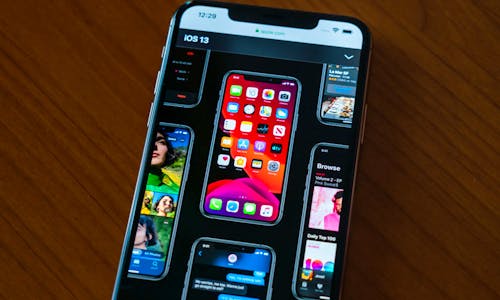The Good
- Expandable memory
The Bad
- Overpriced
Android smartphones and tablets are everywhere nowadays with companies like Ouya even adapting the mobile OS to suit home console gaming. Now though, we’re focusing on a product built with serious mobile gamers in mind – the Wikipad 7.
Mediocre looks but precision handling
The Wikipad 7 is all about offering a more immersive Android gaming experience and the company’s solution comes in the form of a detachable gaming cradle that adds physical controls and beefier sound to a conventional small tablet design.
The tablet itself features a 7-inch WXGA (1280×800) IPS LCD panel which isn’t the sharpest tool in the shed, but is certainly good enough to offer high quality visuals with solid depth and good viewing angles.
The large black bezels around the screen’s edge aren’t attractive, but they serve two purposes giving you enough room to rest your thumbs should you want to game with on-screen controls, or giving enough purchase for the mechanism when slotting the tablet into the gaming cradle. It’s a necessary evil as it doesn’t obscure the screen, making the experience more immersive.
The tablet slots neatly into a chunky plastic housing that feels a little cheap but no more so than current-gen console controllers. The broad grips are finished in a soft-touch material, offering plenty of traction for manoeuvring the Wikipad without fear of dropping it. Impressive when you realise it’s only really secured by the microUSB port at its base.
Each hand is also graced with a number of controls. Both sides feature analogue sticks, dual shoulder buttons and back and menu keys, while the left side plays host to a d-pad and the right features four ‘A’, ‘B’, ‘X’, ‘Y’ keys. The chromed plastic finish doesn’t look particularly plastic, but the controls nonetheless offer pleasing amounts of feedback whilst gaming. It may look cumbersome, but gaming with the Wikipad is actually a joy and the hardware controls most certainly enrich the experience.
FPS, RTS, racer? Take your pick
The Wikipad 7 comes pre-installed with Android 4.1 Jelly Bean and for the most part offers a traditional, near stock experience. Its creators have added a few gaming centric additions including Nvidia’s NVision app (the Wikipad 7 utilises and NVIDIA Tegra 3 processor) as well as a handful of titles supported by the Wikipad gaming peripheral out-the-box.
Playing games is of course what this tablet is all about and based on the titles we tried, it’s a certainly fit for purpose. Although as a standalone tablet you can enjoy any game with touchscreen controls, there are just over 100-titles that support the Wikipad’s detachable thumbsticks and buttons. Control layouts for each game are listed on Wikipad’s website, but unfortunately there’s no way to customise these control schemes, so be prepared to be at the mercy of Wikipad’s engineers.
In truth it didn’t take us long to familiarise ourselves with the control layouts for the likes of GTA 3 and Shadowgun: Deadzone meaning we could enjoy games with a screen devoid of on-screen controls, leaving the visuals to take centre stage.
The vast library of titles to choose from is nice and diverse and when you’re not gaming, Android 4.1 Jelly Bean does a great job at serving everyday needs like checking email, drafting documents on Google Drive or watching YouTube videos.
Plug and play
Thankfully pairing tablet and gaming cradle is as easy as slotting one into the other. The centrally positioned micro USB port on the Wikipad 7’s underside slots seamlessly into the connector on the controller and charging via microUSB can take place whether the tablet is docked or not.
On the top there’s also a headphone jack and a microHDMI out, which means you can game on a big screen (or watch movies) if you prefer. Although this is a great addition, the Tegra 3 processor, and 1GB of RAM aren’t completely up to the task of outputting a rich 3D game like GTA 3 and lag is noticeable, making gameplay uncomfortable. That being said, gaming on the tablet itself is buttery smooth for the most part, that is of course unless you trial an un-optimised title like N.O.V.A. 3, which doesn’t support the Wikipad’s hardware controls and stresses the hardware.
General UI navigation and apps on the whole run smoothly and the large 4100mAh cell will keep the Wikipad 7 going for a couple of days when performing conventional tablet tasks. Naturally, gaming will increase the drain significantly, so it would have also have been nice to perhaps see an additional battery life into the gaming cradle.
KO or game over?
The tablet itself is essentially a tuned version of last year’s Google Nexus 7 and we welcome additions like the microHDMI out. The gaming cradle may not be the most beautiful peripheral out there, but it does undeniably improve the gaming experience over on-screen controls and in truth, we would have given the Wikipad 7 a 3 out of 5 if we were weighing it on its gaming prowess alone.
You’ll get a solid gaming experience from current-gen titles optimised for the Wikipad 7, but going forward, the internals are unlikely to age elegantly, already showing cracks as demonstrated by the most visually taxing titles on the Google Play store.
At £250 it’s also too expensive for what it offers, so here’s hoping Wikipad offers a newer tablet to slot into that gaming cradle with better specs and a more competitive. Alternatively the new 2013 Nexus 7 will offer slicker performance for less, and with a little jiggery-pokery you can even pair a PlayStation or Xbox controller via Bluetooth to emulate that same sense of true control, albeit in a less portable package.















Leave a Reply